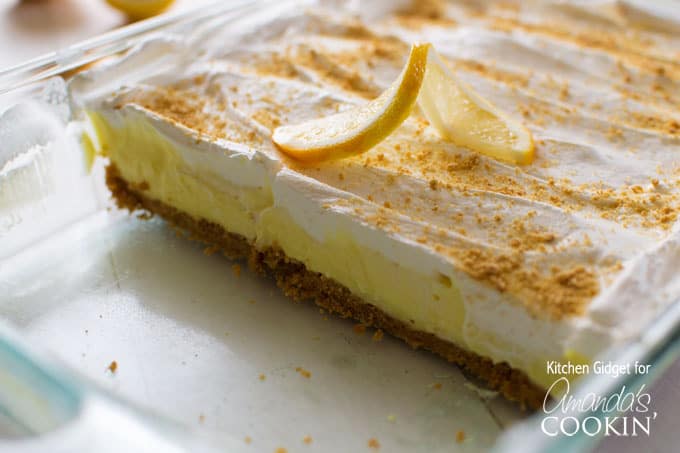
The Zesty Delight: A Deep Dive into the Art of Lemon Pudding
Lemon pudding, a dessert that evokes images of sunshine and simple pleasures, has captivated palates for centuries. More than just a sweet treat, lemon pudding represents a confluence of culinary history, regional variations, and the enduring appeal of a perfectly balanced flavor profile. This article delves into the fascinating world of lemon pudding, exploring its origins, variations, and the secrets to creating the perfect bowl of this zesty delight. The keyword, lemon pudding, will be central to our exploration.
A Brief History: From Humble Beginnings to Global Appeal
The precise origins of lemon pudding are somewhat shrouded in culinary history. However, the concept of a creamy, citrus-infused dessert has roots that trace back to various cultures. Early versions likely emerged in regions where lemons were readily available, such as the Mediterranean. These early puddings were likely simpler affairs, utilizing basic ingredients like eggs, sugar, and, of course, lemons. Over time, as trade routes expanded and culinary techniques evolved, so did the recipes for lemon pudding.
The 18th and 19th centuries saw a surge in the popularity of puddings, particularly in Europe. During this period, refined sugar became more accessible, allowing for sweeter and more elaborate desserts. This era witnessed the refinement of lemon pudding recipes, with the introduction of ingredients like butter and cream, leading to richer and more luxurious variations. The dessert began to appear in cookbooks and was embraced by both home cooks and professional chefs.
Regional Variations: A World of Lemon Pudding
One of the most fascinating aspects of lemon pudding is its adaptability. Across different regions and cultures, the dessert has been interpreted and modified, resulting in a diverse array of variations. These regional differences often reflect the availability of local ingredients and the unique culinary traditions of each area.
- British Lemon Pudding: Often referred to as lemon curd, this version is characterized by its smooth, creamy texture and intense lemon flavor. It typically involves a combination of lemons, butter, eggs, and sugar, cooked over a double boiler until it thickens. It is also used as a filling for tarts and pastries.
- American Lemon Pudding: American lemon pudding often takes the form of a custard-style dessert, similar to lemon meringue pie filling. It features a thicker consistency and a more pronounced tartness. Some recipes include cornstarch to help with thickening.
- French Lemon Pudding: French pastry chefs have their own take on the lemon pudding, which can incorporate various techniques and ingredients, resulting in desserts like lemon tarts and mousses, all centered around the core flavors of lemon.
These are just a few examples of the incredible variety that exists within the world of lemon pudding. Each variation tells a story about the local culture and the evolution of culinary practices over time.
The Science of the Perfect Lemon Pudding
Creating the perfect bowl of lemon pudding is a delicate balance of art and science. Understanding the key ingredients and the roles they play is crucial for achieving the desired texture, flavor, and consistency.
- Lemons: The star of the show. The quality of the lemons directly impacts the flavor of the lemon pudding. Using fresh, ripe lemons with a bright, vibrant aroma is essential. The zest and juice are both used to impart flavor.
- Eggs: Eggs are the key to the pudding’s structure and richness. They act as a binder and help the pudding thicken. The ratio of yolks to whites can influence the final texture.
- Sugar: Sugar provides sweetness and also plays a role in the thickening process. The type of sugar used can affect the final taste and texture.
- Butter: Butter adds richness, creaminess, and a subtle flavor dimension. It contributes to the smooth texture of the lemon pudding.
- Starch (Optional): Some recipes include a small amount of starch, such as cornstarch or arrowroot, to help thicken the pudding.
The cooking process is equally important. The key is to cook the pudding gently over low heat, often using a double boiler, to prevent the eggs from curdling. Constant stirring is essential to ensure a smooth texture and even cooking.
Recipe for Success: A Classic Lemon Pudding
Here’s a classic recipe to help you create a delicious lemon pudding at home:
- Ingredients:
- 1/2 cup granulated sugar
- 1/4 cup cornstarch
- 1/4 teaspoon salt
- 1 1/2 cups water
- 1/4 cup lemon juice
- 2 tablespoons lemon zest
- 2 tablespoons butter
- 2 large egg yolks
- Instructions:
- In a medium saucepan, whisk together the sugar, cornstarch, and salt. Gradually whisk in the water until smooth.
- Place the saucepan over medium heat and bring to a simmer, stirring constantly.
- Reduce the heat to low and continue to cook, stirring constantly, until the mixture thickens, about 1-2 minutes.
- Remove the saucepan from the heat and whisk in the lemon juice, lemon zest, and butter until the butter is melted and the mixture is smooth.
- In a small bowl, whisk the egg yolks. Temper the egg yolks by slowly whisking a small amount of the hot pudding mixture into the yolks. This prevents the yolks from curdling.
- Pour the tempered egg yolks back into the saucepan and whisk to combine.
- Cook over low heat, stirring constantly, for 1-2 minutes, or until the pudding thickens further.
- Remove the pudding from the heat and pour it into individual serving dishes.
- Cover the dishes with plastic wrap, pressing the wrap directly onto the surface of the pudding to prevent a skin from forming.
- Refrigerate for at least 2 hours to allow the pudding to set.
- Serve chilled, garnished with a dollop of whipped cream or a lemon twist.
Tips and Tricks for Lemon Pudding Perfection
While the basic recipe is straightforward, here are some tips and tricks to elevate your lemon pudding game:
- Use High-Quality Lemons: As mentioned earlier, the quality of your lemons is paramount. Choose lemons that are heavy for their size and have a bright, fragrant aroma.
- Zest with Care: Be careful not to zest the white pith of the lemon, as it can impart a bitter flavor. Use a microplane or a fine grater for the best results.
- Temper the Eggs: This is a crucial step to prevent the egg yolks from curdling. Slowly whisk a small amount of the hot pudding mixture into the yolks before adding them back to the pot.
- Cook Low and Slow: Cook the pudding over low heat and stir constantly to prevent scorching and ensure a smooth texture.
- Chill Thoroughly: Allow the pudding to chill for at least 2 hours, or preferably longer, to allow it to fully set and develop its flavors.
- Experiment with Flavors: Get creative with your flavorings. Add a touch of vanilla extract, a pinch of nutmeg, or even a splash of limoncello for a unique twist.
Beyond the Bowl: Serving and Pairing Lemon Pudding
Lemon pudding is a versatile dessert that can be enjoyed in many ways. It can be served on its own, garnished with a dollop of whipped cream, a sprig of mint, or a lemon twist. It also pairs well with a variety of other desserts and ingredients.
- Pairings: Lemon pudding complements the following:
- Fresh berries, especially raspberries, blueberries, and strawberries.
- Shortbread cookies or other buttery biscuits.
- A light and airy meringue.
- A glass of sweet white wine or a sparkling dessert wine.
- Presentation: Consider serving lemon pudding in individual ramekins or small glass dishes for an elegant presentation. You can also layer it with other ingredients, such as crushed cookies or fresh fruit, to create a more elaborate dessert.
The Enduring Appeal of Lemon Pudding
Lemon pudding, with its bright flavor and comforting texture, continues to be a beloved dessert around the world. Its simplicity belies its ability to deliver a burst of sunshine in every bite. Whether you’re a seasoned baker or a novice cook, creating a batch of homemade lemon pudding is a rewarding experience. The joy of savoring a perfectly balanced lemon pudding is a testament to the enduring appeal of this classic dessert. From its humble beginnings to the diverse regional variations we see today, lemon pudding represents a culinary journey worth taking.
The ability to personalize and adapt lemon pudding recipes also adds to its appeal. Experimenting with different ingredients and techniques allows you to create a version that perfectly suits your taste. The simplicity of the dessert also makes it an excellent choice for cooks of all skill levels. By following the basic principles and adding your own personal touch, you can create a truly memorable lemon pudding experience.
So, the next time you’re looking for a dessert that is both refreshing and satisfying, consider the timeless appeal of lemon pudding. It’s a dessert that’s sure to brighten your day and bring a smile to your face. Enjoy the journey of discovering your favorite lemon pudding recipe!
Conclusion: Embracing the Zest
In conclusion, lemon pudding is more than just a dessert; it’s a culinary tradition, a canvas for creativity, and a source of pure enjoyment. From its historical roots to its diverse regional variations, the story of lemon pudding is a testament to the enduring power of simple ingredients and skillful techniques. By understanding the key ingredients, mastering the cooking process, and embracing the possibilities for customization, you can unlock the secrets to creating a lemon pudding that will delight your taste buds and bring a touch of sunshine to your day. The journey into the world of lemon pudding is one filled with flavor, history, and the simple pleasures of life.
[See also: The Ultimate Guide to Baking Perfect Lemon Tarts] [See also: How to Make the Best Lemon Meringue Pie] [See also: Easy Lemon Curd Recipe]

